Homeowners, Stand Your Ground: Natural Remedies for Battling Indoor & Outdoor Pests This Season

The warm season is finally here, and homeowners across the country are in a hurry to store away the fur-lined coats and welcome warming temperatures, humming birds, and budding trees. But as nature awakens from its long winter hibernation, prompting us to make room in our hearts for sunshine, the rest of God’s creatures are doing the same – including the crop-ravaging, property-damaging, mood-ruining household pests.
If you were positive that there would be no way for spring pests to survive the deep freeze of winter, you have another thing coming. Although ants, termites, bed bugs, ticks, and other creepy critters do have their “breaking point,” cold temperature (or even sub-freezing weather) is definitely not one of them.
Over time, insects have developed several strategies for surviving the cold: some have antifreeze-producing capabilities while others burrow into warmer, highly-insulated areas, such as logs or the ground. Fire ants, for instance, which have invaded many regions in the U.S. and Canadian provinces over the last ten years, need to be exposed for at least two weeks to temperatures below 10 degrees Fahrenheit to impact their population. They enter what is called “diapause,” a period during which they stop feeding, growing, or reproducing, and just wait patiently for spring’s arrival.
Fortunately, you are not defenseless in the face of the armada of pests, no matter how resilient and fully-equipped for survival they may be. Whether critters are gnawing through your house furniture or wreaking havoc in your vegetable garden, knowing more about them will increase your chances to win the fierce battle awaiting you this season.
Who’s Invading Your Space?
As we open windows and screen doors to let the spring air in, we also allow entire colonies of pests find their way inside our homes. Warm-season bugs and pests may not appear as particularly dangerous, but most of the time, they are more than just a nuisance, carrying numerous health risks for both the health of humans and the integrity of the house and surrounding property. Here are the main culprits to watch out for this season:
1. Ticks
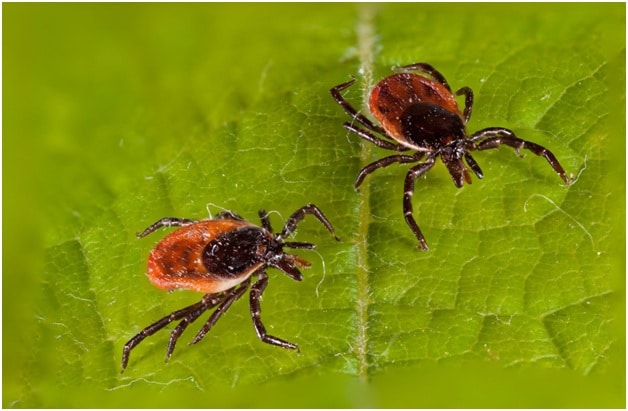
Plan to transform your garden into a woodland retreat to cool off on the hot summer days to come? Perfect! Ticks can hardly wait to move into a moist, shaded, and grassy environment, as well. In fact, they thrive in any area with high grass, trees, shrubs, and overgrown vegetation, generally avoiding direct sunlight. However, don’t be surprised if you stumble upon the gruesome critters in the cracks and crevices of your house, behind baseboards, or crawling on the floor – ticks are brought inside the house on clothing or by pets.
If you are facing a tick infestation, you shouldn’t treat it lightly, considering the wide variety of pathogens carried by any blood-sucking creatures. Lyme disease is the most well-known disease caused by tick bites, but they are important factors in transmitting rocky mountain spotted fever, tularemia, relapsing fever, tick paralysis, or human Ehrlichiosis.
There are simple steps you can follow to make sure ticks will not endanger the health and well being of your family and pets. First of all, de-clutter your home and remove items or debris that could serve as a hiding spot for pests. Then make sure to thoroughly check the clothes you wear outside, and if they’re dirty, wash them in hot water. Since pets are the number one carrier of ticks inside the house, have them wearing tick-repelling collars every time they go outside.
If the infestation is not severe enough to require the assistance of a professional exterminator, you can prepare an effective tick treatment yourself. Mix diatomaceous earth (white powder made from the remains of microscopic organisms called diatoms) with baking soda and apply the mixture in all their dwelling places, including baseboards, floors, crevices, and carpets. During spring cleaning, wipe all your furniture using a solution of water and apple cider vinegar or lemon juice. Ticks avoid citrus, mint, or other strong essences, so prepare a solution to spray on your clothing – it will keep ticks away and give your clothes a fresh, summery smell.
2. Carpenter Bees
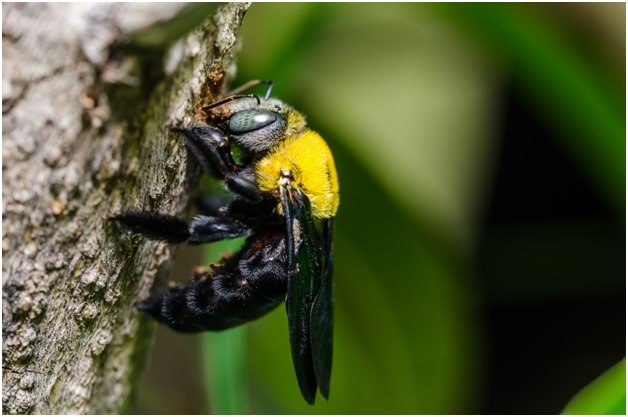
Stinging insects such as carpenter bees, yellow jackets, hornets, and wasps are, perhaps, the most dreaded and feared of outdoor pests, and for good reason. Their sting causes sharp, sudden pain and an awful burning sensation that makes victims curse their very existence on this planet, although most of them are considered beneficial for the environment.
The health risks posed by these pests are even higher for those with allergic reactions to their venom, who may experience a wide range of toxic effects, from inflammation and swelling to vomiting, nausea, and even collapse. The male carpenter bees do not sting; their main job is to protect the nest, and although they may appear aggressive and even dart towards you, they’re not equipped with stingers, so they pose no real threat to you. Females, on the other hand, can sting, but are so preoccupied with attending to their nest duties, that they will rarely bother to attack humans.
They can, however, cause damage to your property and garden wood furniture, usually boring into unfinished wood surfaces. If you notice carpenter bees nesting or damaging wooden structures around your house, consider a tried and tested natural remedy: petrol and carb cleaner mixed together and applied towards the bees or on their nesting sites. Both ingredients are flammable and can damage certain surfaces, so make sure to use it carefully while wearing protective equipment.
3. Ants
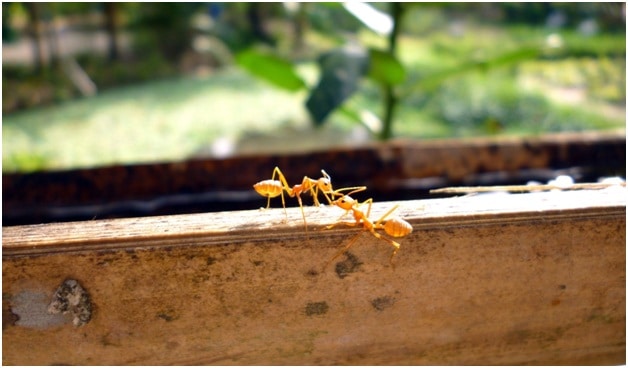
Some cookie crumbs on the kitchen counter or some spilled juice on the floor is enough to trigger ants’ sweet tooth and prompt them to march in – they can smell sugary foods and beverages from tens of meters away. Even dirty dishes or standing water will act as a powerful magnet for the starving insects. At first, you may notice only a handful of them coming inside to forage for food, but before you know it, you’ll start finding clumps of the tiny black creatures all over the house.
And once inside, they start wreaking havoc. Oftentimes, you’ll find them nesting in soft wood structures that are already rotting, and while they don’t feed on it as termites do, they burrow into it and hollow it out to the point when the structural integrity of your house might be affected.
To find their nest and put an end to the wood massacre, you must follow the trail of ants, and if they’re not in sight, consider putting out attractive food to encourage foraging. Once you identify the location of their nest, proceed by applying some natural deterrents that are both easy and safe to use. Lemon juice, cinnamon sticks, garlic gloves, peppermint, diatomaceous earth, coffee grounds, and several other natural substances can work wonders in convincing these pests to move house. Most of these ingredients should be mixed with water and sprayed on furniture, counter tops, wooden surfaces, and directly towards the culprit.
4. Termites
While you’re busy battling the armies of ants, you may stumble upon another aggressive critter awakened by the chirping of birds and blossoming of flowers. Swarming termites are no laughing matter, especially because their insatiable appetite for cellulose in all its forms (wood, cardboard, paper, etc.) will encourage them to attack the very structure of your house. Often, they enter the house unseen and, before you notice it, they start crawling all over the place, more so if the foundation of your house is close to the soil or if you have moisture problems.
Depending on the size of the termite colonies feeding on the wooden structures inside your home, you can use several over-the-counter solutions to stop their feast. Effective home remedies include applying boric acid on wood and other cellulose materials, spraying aloe vera gel directly on insects, or rub petroleum jelly into wood furniture to deter termites. If things get out of hand, however, you should consider licensed pest control companies and their effective arsenal of termite-repelling weapons, including traps, freezing and heating treatments, or termite barriers.
5. Slugs
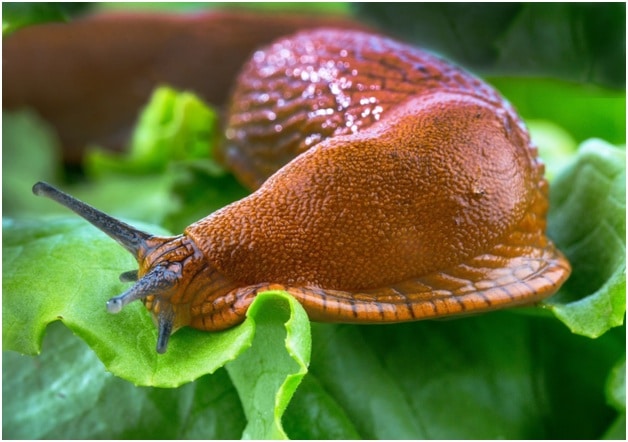
When you do get a break from bees’ and wasps’ annoying buzzing, you realize your garden is exposed to the damage of yet another hungry predator: slugs. Attracted by pretty much any plant with fleshy, juicy leaves, the monstrous army of slimy creatures can gradually turn your luxurious, flowery garden into a bare patch of land. That is, if you don’t act promptly and remove them from your garden permanently, using traps and natural remedies or resorting to professional pest control to dispose of them permanently.
Want to take matters into your own hands? Prepare a solution of honey and yeast or mix ammonia with water and go slug hunting! These mixes are safe for your garden plants, so don’t worry about causing more harm than good. Some tested remedies that could end your slug or snail problem also include diatomaceous earth, lava rock, salt, beer, and garlic – all potent repellents for the slimy crawlers. However, choosing a slug treatment should be based on the severity of your infestation. If things appear to have gotten out of hand, you’re better off calling an exterminator to ensure the survival of your garden plants.
Laws of Attraction

Whether you’re planning to enjoy the great outdoors with a romantic dinner for two or thinking of throwing a large picnic party for your entire family, you should expect some uninvited guests, as well. Bugs, flies, wasps, mosquitoes, and other flying insects are dying to dip their faces into the jams, jellies, fruit, and sweet beverages you’re preparing for your guests. If food is not available, they’ll settle for your guests themselves, especially the hungry blood-sucking mosquitoes. If you want to keep your family safe and your food unaltered, here are some tips on how to deter picnic bugs:
- Remove all sources of pooling water, including bird baths and wading pools
- Cover drinks and food, especially the sweet varieties
- Keep yourself covered with long-sleeved shirts and pants, especially in the evenings
- Place citronella candles on the table to deter unwanted visitors from your party
- Avoid wearing brightly colored clothes or floral prints (stinging insects can mistake you for a flower)
- Use repellent sprays directly on your skin to protect against mosquito bites
- Remove garbage and rotten food from the area surrounding your house
- Never leave out food unless properly sealed in covered containers
Professional Pest Control to the Rescue
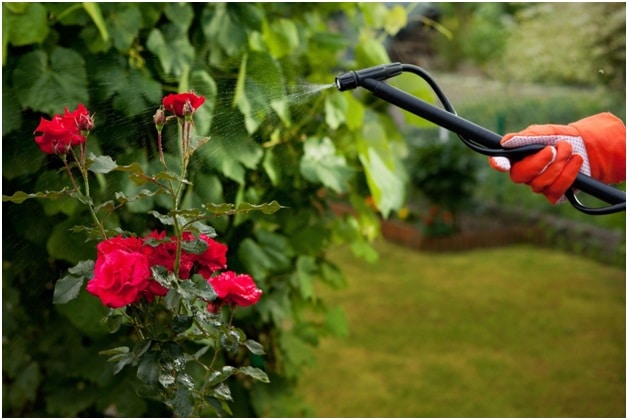
Overwhelmed by so many pests attempting to take over your house and garden? Don’t be. In your quest to defeat these bothersome foes, you can resort to numerous natural remedies, but you can also rely on professional pest control services, to keep their numbers under control and out of your way.
The first line of defense of exterminators against invasive pests is canine detection, especially effective for Canadians’ worst nightmare: bed bugs. With over 97% accuracy (compared to the 30% of visual inspections performed by pest management professionals) and the ability to detect both live organisms and their eggs under carpets, inside mattresses, behind baseboards and walls, canine detection can help you significantly reduce the potential financial impact of a full-blown invasion.
Cockroaches, bed bugs, and other despised invaders of your house will be put to rest by the powerful heat treatments provided by pest control professionals, effective in eliminating bugs with minimal damage to your property. At temperatures of up to 56 degrees Celsius, the heat destroys bugs’ inner tissues within minutes. Thanks to their high effectiveness and ease of use, heat treatments are commonly used to treat larger areas such as hotels, factories, office buildings, historical museums, residential properties, but also public transportation and shipping containers.
Homeowners who want to get rid of pests while minimizing the use of pesticides and their toxic effects on the environment can resort to Integrated Pest Management (IPM), an eco-friendly and sensitive approach to pest management and control. In their quest to treat all kinds of indoor and outdoor pests, professional exterminators will employ a series of pest management methods that include pest identification, population assessment, monitoring, control, and prevention. Thanks to their effectiveness and low risk, IPM programs are slowly replacing pesticides and chemical management tools with numerous harmful effects for both humans and the environment.
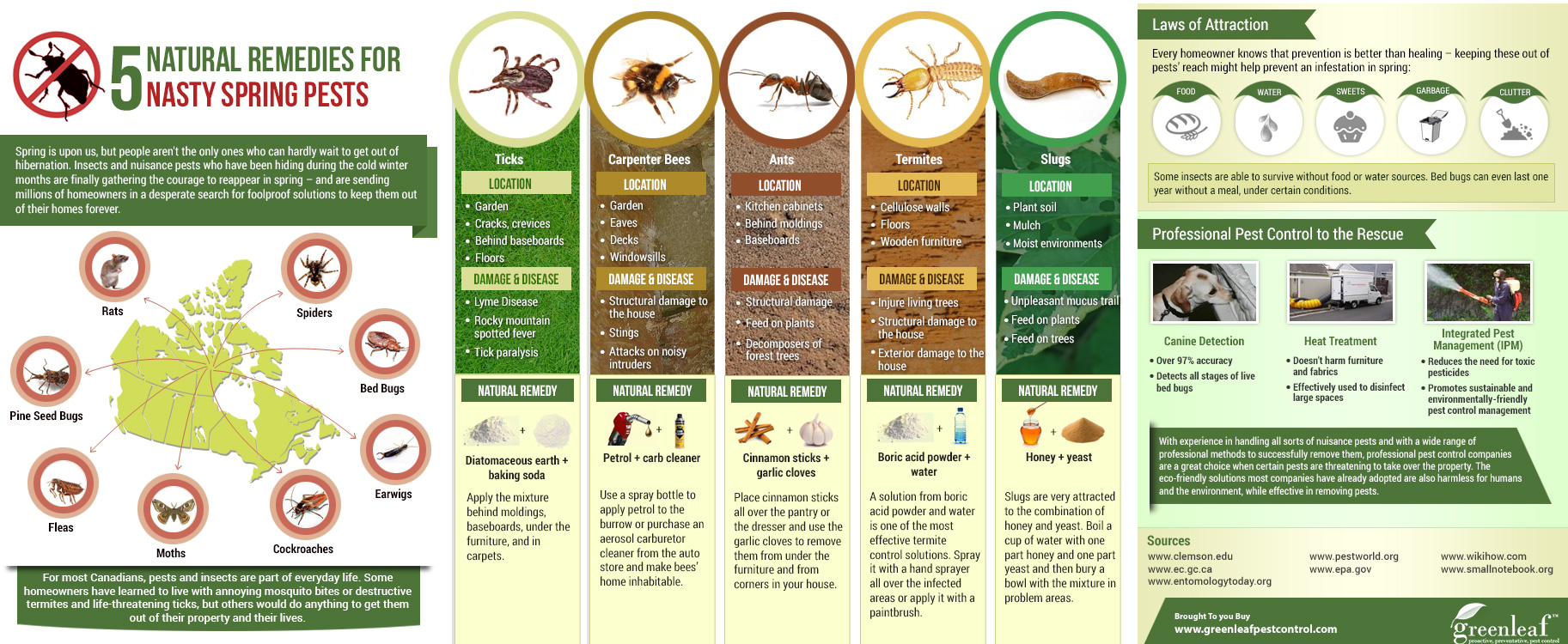
About the Author:
Daniel Mackie, co-owner of Greenleaf Pest Control, is a Toronto pest control expert well-known as an industry go-to guy, an innovator of safe, effective pest control solutions, and is a regular guest on HGTV. Mackie, along with business partner Sandy Costa, were the first pest control professionals in Canada to use detection dogs and thermal remediation for the successful eradication of bed bugs. In his free time, he is an avid gardener.














You must be logged in to post a comment.